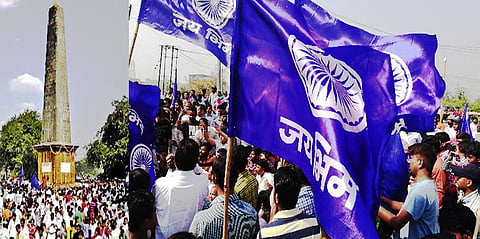

[dropcap]I[/dropcap]n its life of about ten months, the Bhima-Koregaon case has undergone as many twists and turns as no such case could ever imagine. Beginning simply as a rioting case, implicating the diametrically opposite group of people to protect the actual perpetrators, it went on to become a case of criminal conspiracy and then to a dreaded UAPA (Unlawful Activities Prevention Act) case of a conspiracy to assassinate the Prime Minister, all through involving a number of procedural lapses and arbitrary changes. Then it moved on to another level of searches and arrests violating established procedures, and then led to the Supreme Court's intervention and at least five other courts of law delivering different, contradictory and often evasive verdicts, leaving everyone in utter confusion. Is the whole affair being enacted as a theatre of State-sponsored harassment for the accused-arrested activists and a terrible farce for the observers? Of course.
At this point of time, it is interesting to recapitulate the case and to examine the way the investigation and the legal process have proceeded till now.
The conduct of the main investigating agency, Pune Police, demonstrates that the procedure adopted was far from reasonable and legal, at least on 11 counts:
This is the saga of irregularities carried out by Pune Police that went on for eight months and then the Supreme Court intervened on a petition by historian Romila Thapar and others. The apex court adjourned the hearings to September 6 and gave an interim order to keep the five accused under house arrest.
The arguments on the Romila Thapar petition were heard on September 6, 17, 19 and 20 and a 2:1 judgment was delivered on September 28. The majority judgment written and pronounced by Justice A M Khanwilkar in consonance with the then Chief Justice of India, Justice Dipak Mishra said, "the interim order passed by this court on 29th August, 2018 shall continue for a period of four weeks to enable the accused to move the concerned court". Justice D Y Chandrachud, in his dissenting judgment, accepted the petitioner's contention that the present investigation was mala fide and it needs to be done by another agency under the supervision of the court.
As the chain of events beginning from January to August clearly demonstrated that the investigating agency was not following the law of the land in letter and spirit, indicating its ulterior motive, the petitioners sought relief from the Supreme Court in terms of a "fair and independent investigation" by a different agency monitored by the court.
Strangely, the majority judges have not taken this chain of events into consideration and dealt a lot on the prayer and its legality alone and raised obviously unnecessary question of whether the accused or their friends have a right to choose investigating agency. In fact, the petitioners or the accused never thought or asked for an investigative agency of their choice. They just showed the series of events for eight months and expressed their suspicion on the present investigating agency and hence sought the help of the highest court in the land. The judgment kept silent on that long process and picked holes on the prayer which actually was the end result of that process.
Further, the learned judges after hearing the oral submissions and written arguments of the petitioners, which clearly portrayed the mala fide nature of Pune police investigation, said "except pointing out some circumstances to question the manner of arrest…no specific material facts and particulars are found in the petition about mala fide exercise of power by the investigating officer."
The majority judgment contained at least three major debatable aspects like arbitrariness in framing the questions or issues of the case, spelling out leading and prejudicial statements, even while categorically saying it was not in their purview, and suddenly becoming aware of something called "jurisdictional court" and "appropriate court" and the petitioners naturally appealed for a review. However, the Supreme Court rejected the review petition on October 27.
In the meanwhile, the activists arrest case has appeared in various forms before at least five different courts (Delhi, Punjab & Haryana, Telangana and Andhra Pradesh and Bombay High Courts and Pune Special Sessions Court):
It is strange that each of these five courts took different takes on similar petitions before them and gave different judgments and reliefs. The idea behind most of the courts seems to be what Justice C V Nagarjuna Reddy said during the arguments on Varavara Rao's petition: "I have to satisfy both individual liberties and state's interests!"
But the moot question is whether it is possible to reconcile individual liberties and state's interests. The bigger question would be what would be the responsibility of the courts if individual liberties and state's interests are at loggerheads and state uses illegal means to curtail individual liberties.
[Editor's note: N Venugopal is a Telugu poet, literary critic, translator and journalist. He is currently editor of Veekshanam, Telugu monthly journal of political economy and society. His books include Understanding Maoists: Notes of a Participant Observer from Andhra Pradesh – Setu Prakashani, Kolkata, 2013.]